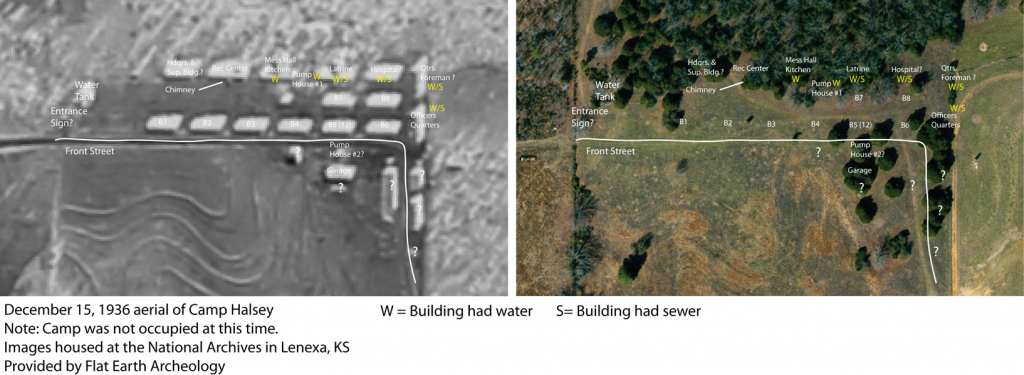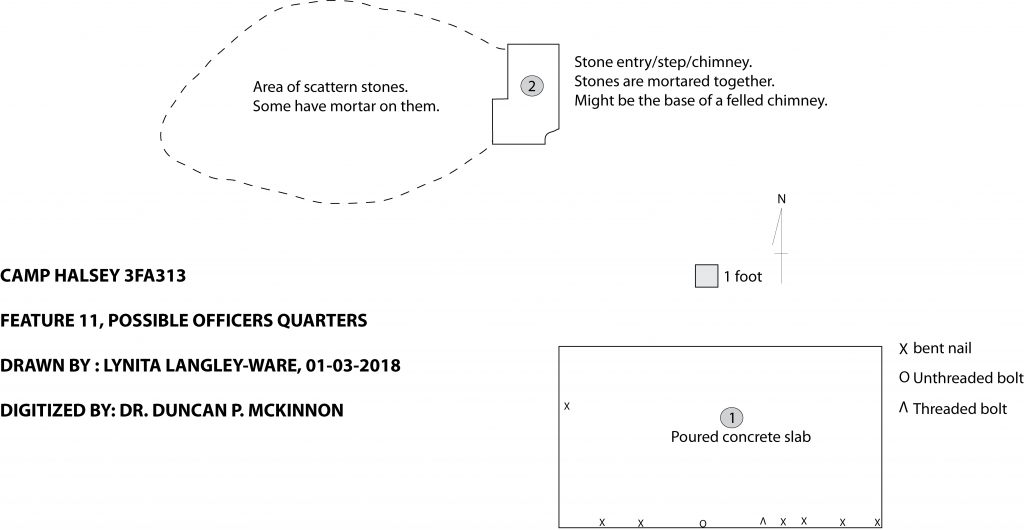UCA Field School 2019
From May 13-31, 2019 University of Central Arkansas students will continue archeological research at Camp Halsey (3FA313) as part of the Field Archaeology course offered at UCA. The upcoming UCA field course is part of a long-term collaborative project between researchers at UCA and Faulkner County Museum to map, evaluate, and document historical and archaeological resources in Faulkner County. This larger project, and the work at Camp Halsey, is organized into three themes that serve to frame to our inquiries: site administration and management, pedagogy and public archaeology, and research.
Fieldwork during the May Intersession will build upon the previous 2018 season using a multi-disciplinary systematic approach to address specific research questions related to social, historical, economic, and political aspects of the camp. Students will be learning several archaeological field methods during the two weeks. Specifically, they will be collecting four types of data from the site: magnetic gradiometry and resistivity data (raster), point data using a total station (vector), and feature excavations with associated artifacts.
1. We will be using magnetic gradiometry and resistivity to continue mapping the large open space where the barracks were located. It is also hoped that densities of metallic debris (using magnetic gradiometry) and the differential soil compaction between the barracks (resistivity) will be mapped, which could offer the former location of removed buildings visible in the 1936 aerial image (see below). Students will gain experience using a Bartington Grad 601 magnetic gradiometer and RM Frobisher TAR-3 resistivity and learn skills related to site survey and field data collection, applied physics, magnetism and resistance, and processes of landscape use and modification.

2. We will also be using a Topcon total station (on loan from the Arkansas Archeological Survey) to accomplish three items. First, the site grid established during the 2018 field season will be re-located and expanded to guide magnetic gradiometry and resistivity surveys. Second, visible features will be mapped and a working map of the site created. Third, additional topographic data (z) will be collected to better integrate constructed features with landscape contours. It will also allow for the expansion of the digital elevation model (DEM) that can be integrated with the two-dimensional remote sensing data. Students will gain experience using a total station and learn skills related to mapping, applied trigonometry, spatial alignment, settlement patterning, distance analysis, and landscape archaeology.
3. Finally, we will be excavating and mapping two features. We will finish excavating Feature 10, which is the former automotive garage. The second feature (Feature 11) is the possible location of the officer’s quarters. The 1934 inventory of buildings lists “Qtrs for Officers w/screen porch” as a rigid frame structure with five rooms and a capacity of four individuals. Water and sewer connections are listed. Students will gain experience in traditional excavation methods and learn skills related to developing and refining research questions as data are collected, the importance of clear and concise field note taking, the process of creating profile and plan sketches, and how field artifacts are assigned provenience and collected (tagged and bagged) in the field (in accordance with Arkansas Archeological Survey statewide standards).
During the third week, students will gain experience in archaeological lab methods and learn skills related artifact cleaning, cataloging, and accessioning, how to conducted a preliminary analysis using a handful of artifacts, the process of digitizing field sketches, remote sensing data processing, and the use of primary historical documents to supplement artifact data.
Students who wish to address a research question will be encouraged to generate an analysis for publication in the Journal of Undergraduate Research in Anthropology (JURA).

